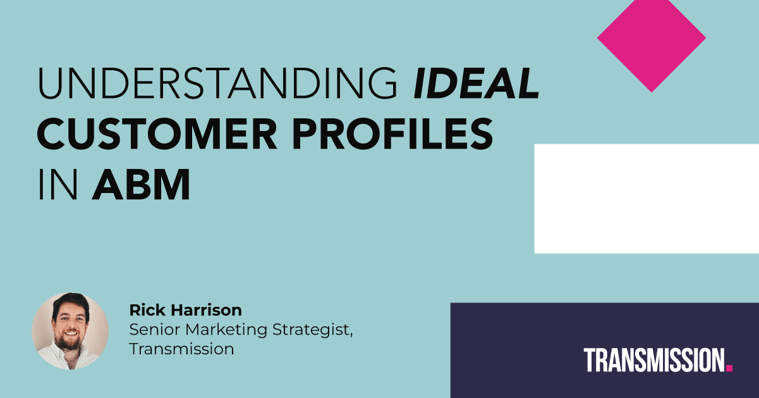
One of the first steps in a good ABM programme is reviewing (or building) your Ideal Customer Profile. However, knowing what one is and understanding how to use one successfully are worlds apart.
Ask an ABM practitioner how to get started with an account-based marketing programme, and they’ll probably tell you to first look at building an Ideal Customer Profile (ICP).
They help focus your decisions, efforts, and resources on the companies most likely to buy and stay with you the longest. After all, a prospect that isn't a good fit will drain your resources, disappoint sales teams, and negatively impact ROI.
What is an Ideal Customer Profile (ICP)?
Well, the hint’s in the name: Ideal Customer Profile. An ICP isn’t just a description of your target audience. It's a detailed and holistic blueprint of the best potential customer for your product or service.
They’re constructed from sales team input, data, and market insights, focusing on companies or entities more likely to gain maximum value from what you offer – resulting in what’s hopefully a successful, long-term business relationship.
To understand your ICP fully, you need to break it down into its primary components:
- Firmographics: Here you should investigate the structural and market aspects of any potential companies you’d like to connect with
- Decision-making unit: This dives into understanding the people within the organisation. It's not enough to just identify companies. You need to know the individuals responsible for making purchase decisions
- Technographics: This is about understanding the technological infrastructure of the target companies to hone in on how you can help solve their challenges
By evaluating these areas, you’ll get a comprehensive picture of the 'ideal' organisation that would benefit most from your offerings. While this might sound limiting, having an ICP can save invaluable time, effort, and resources, ensuring that you're always targeting entities most likely to convert and provide significant value.
Why is an ICP important for ABM?
Put bluntly, an ICP improves all elements of ABM. Our clients are typically focused on their objectives rather than the accounts they’re targeting, making it rare they have a clearly defined account list. So, when talking to clients about ways to segment their accounts, it often comes back to the question of: what’s your ICP?
In some cases, our clients know roughly who they want to target – let’s say the IT department – but might struggle when pushed to decide if this means developers, infrastructure, or security teams. They may also have tunnel vision based on past successes or the views of technical stakeholders when, ultimately, a product or service may be interesting to another market or type of business entirely.
When a client isn’t clear on the specific characteristics of the best organisations to target and why, that’s where our ICP Workshop comes in. For you, it means really drilling down into who your target accounts are, which teams are making the decisions, and how to best target them in your sales and marketing.
How do we use ICPs as part of our ABM programmes at Transmission?
Building an ICP is an extremely valuable activity that often forms part of the early stages of an ABM programme. It can help us better understand an account list as a whole or explore key themes within individual accounts – informing our strategies and recommendations for subsequent stages of a programme.
An ICP can be used to address common ABM challenges – from building or prioritising an account list and decisions around levels of personalisation to increasing customer lifetime value and speeding up the sales cycle. Basing decisions around an ICP approach not only ensures a higher probability of success but also helps prioritise strategies and ensure tactics are relevant.
In some cases, the ICP development process can even identify relevant characteristics that make other markets, verticals, or organisations a good target. Whether we build a new ICP or refine an existing one, the next step we take is often an ABM Readiness Assessment that gathers data and insights on a set of accounts.
If you’d like to learn more about ICPs or to run an ICP workshop, get in touch.